Four bas-reliefs commissioned by a powerful cardinal for one of Rome’s most important basilicas, that of Santa Maria Maggiore
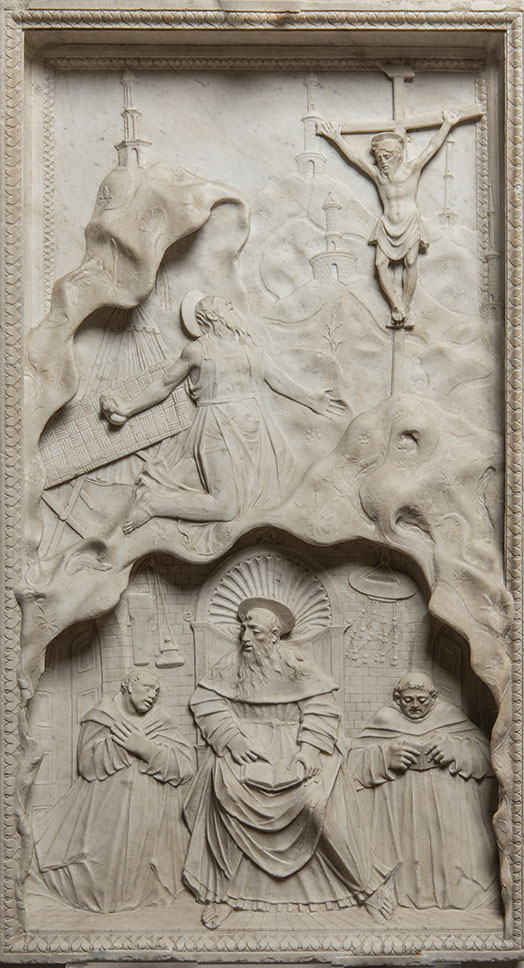
The four reliefs, exhibited in the Cybo Apartment, were created to decorate the so-called St. Jerome's Ark, an altar in the Basilica of Santa Maria Maggiore in Rome: the altar was made by Mino da Fiesole (1429-1484) between 1461 and 1464, commissioned by the French cardinal Guillaume d'Estouteville (1403-1483), one of the most important principals of the time and the archpriest of the Basilica between 1443 and 1483.
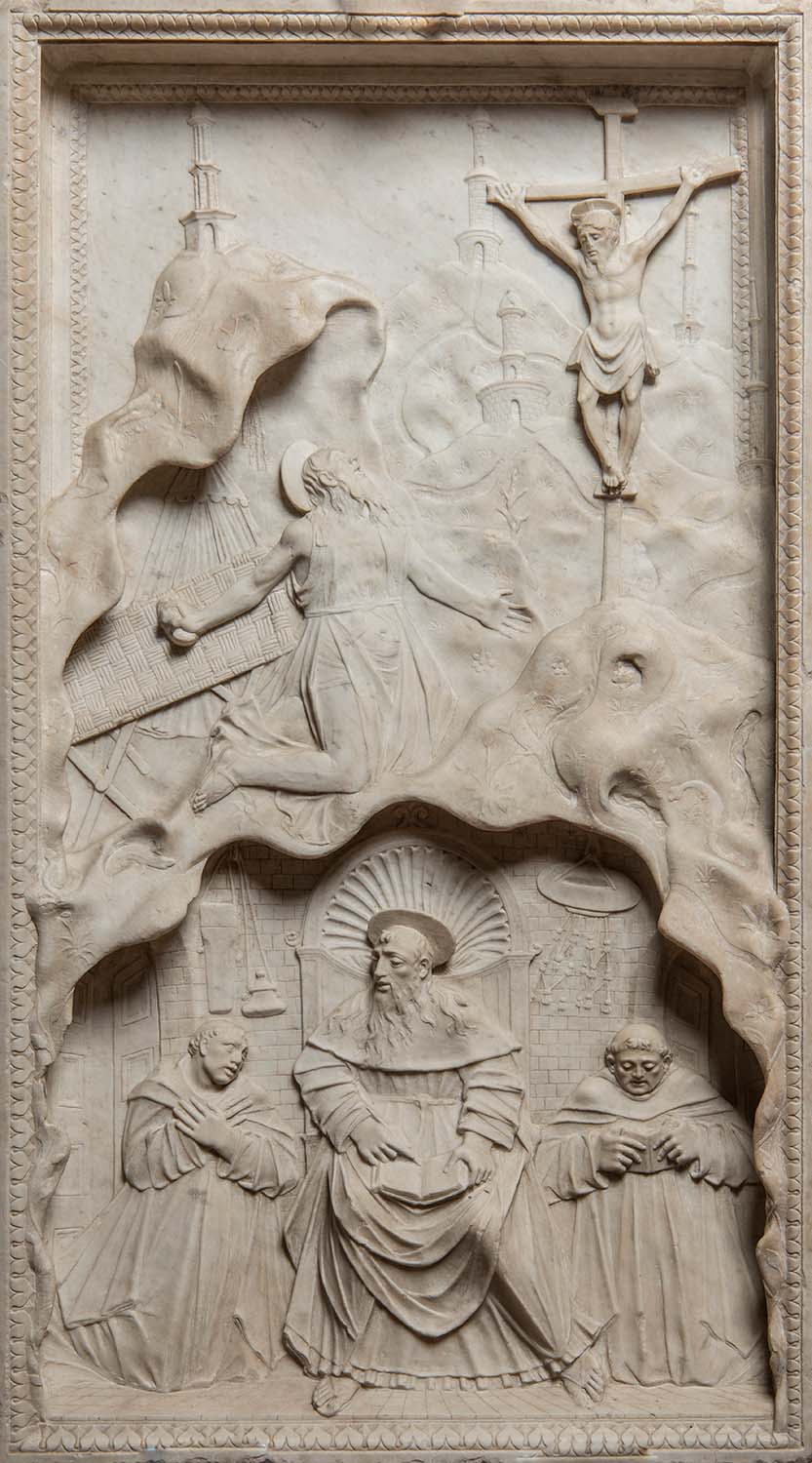
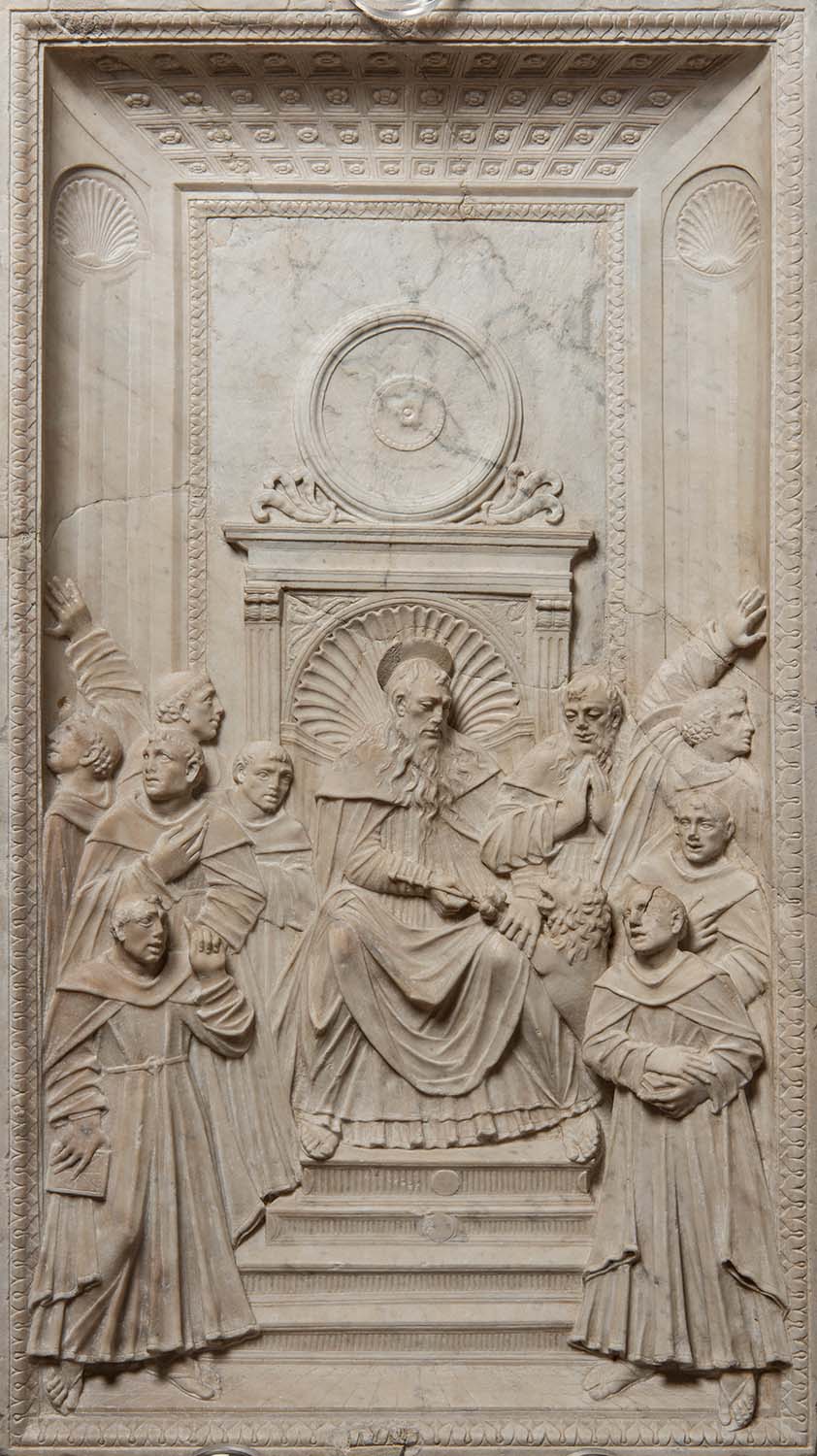
The bas-reliefs illustrate important events in Jerome’s life. The first, divided into two scenes, shows a Saint Jerome penitent in the desert and Saint Jerome in his study, while the remaining three are of Saint Jerome healing the lion, The lion leading the stolen animals to the convent and the Vision of Saint Augustine. One of the most cultured sculptors in mid-to-late 14th century Florence, Mino da Fiesole borrowed heavily from classical arts and crafts, especially from carved ivory decorations.
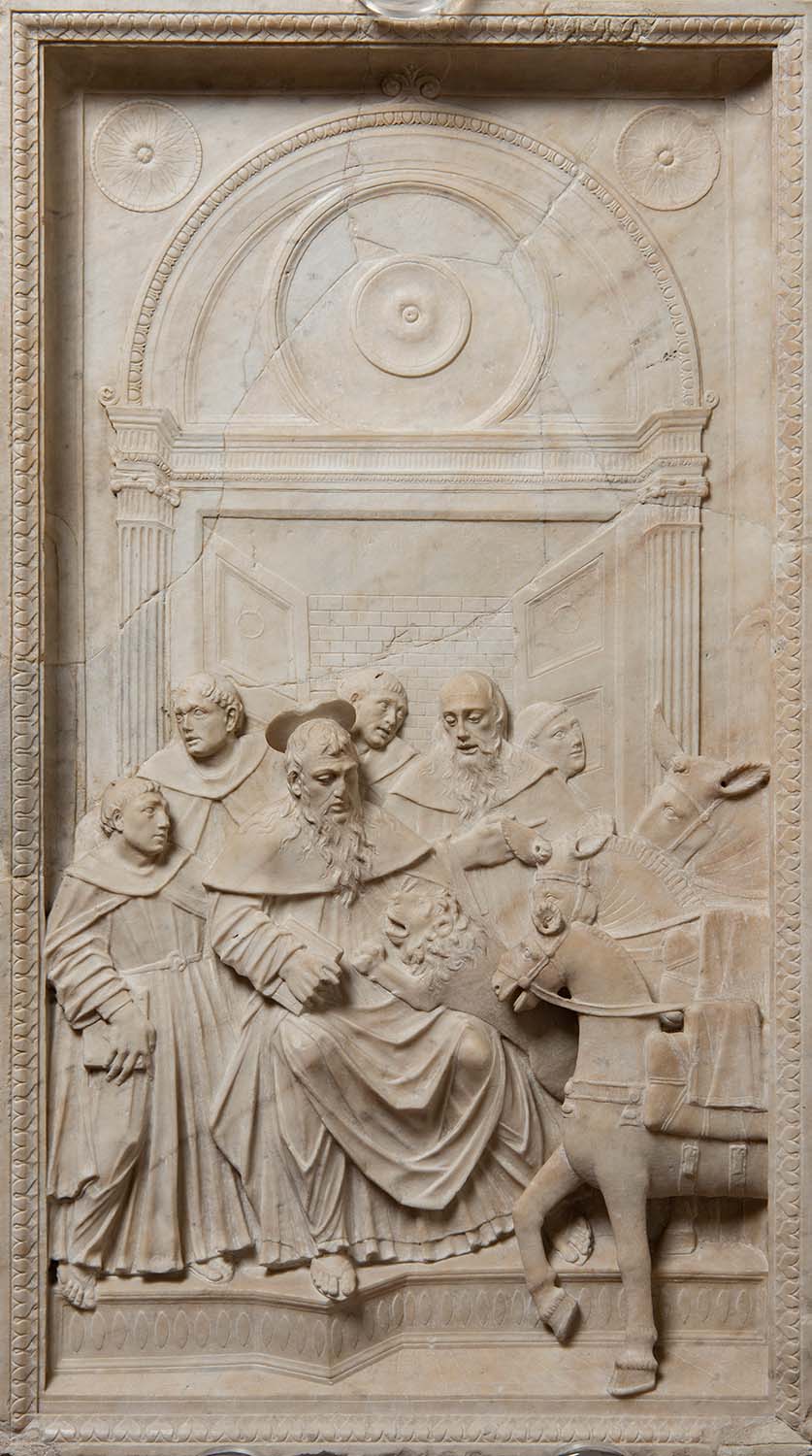
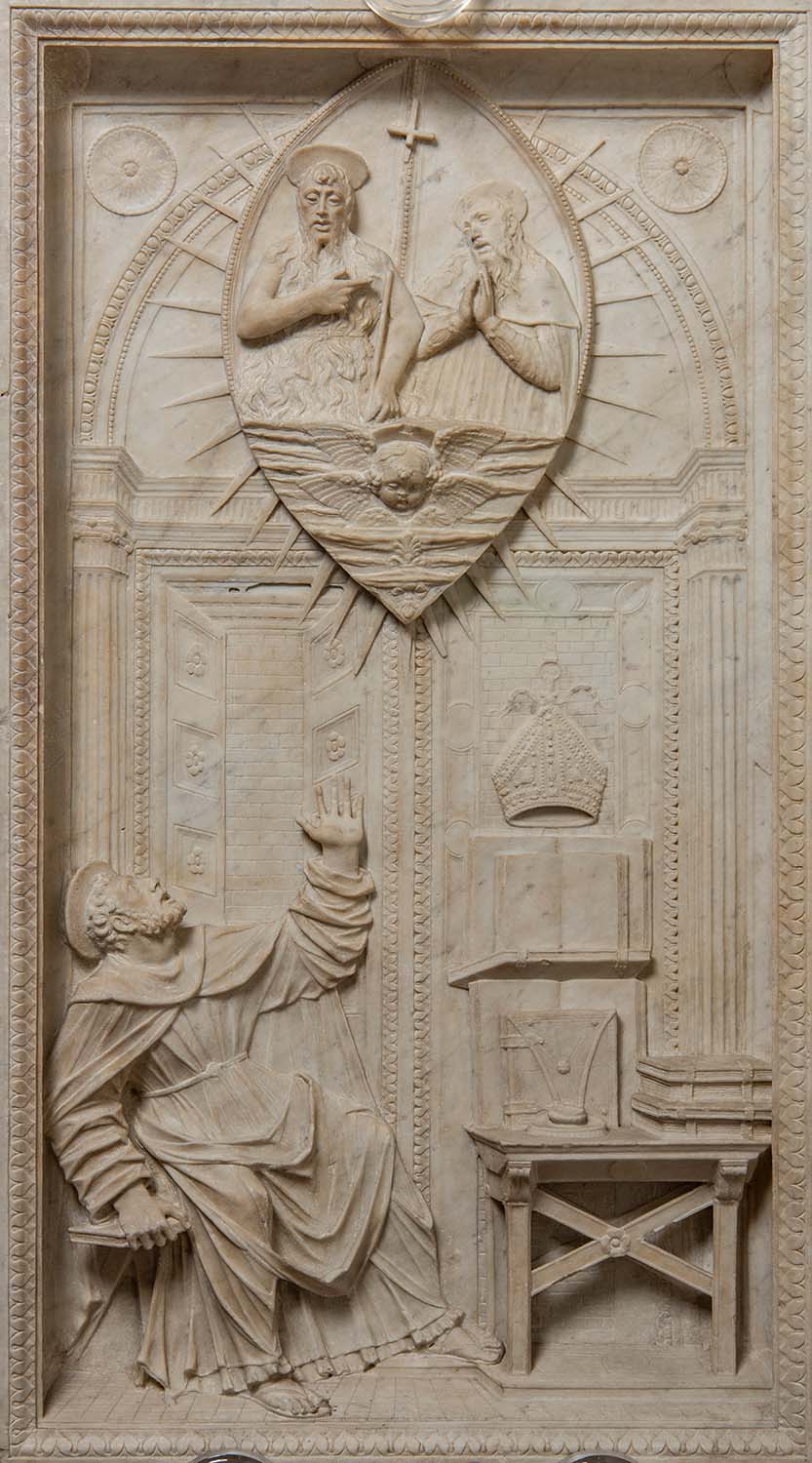
The Coffer of Saint Jerome was dismantled in 1586, to make way for the funeral chapel of Pope Sixtus V (papacy: 1585-1590) in the Basilica of Santa Maria Maggiore. The reliefs, transferred to the villa that the Pope himself owned on the Esquiline, a stone's throw from the Basilica of Santa Maria Maggiore, in the seventies of the nineteenth century converged into the Industrial Art Museum (MAI): their entrance to Palazzo Venezia dates back to 1957.